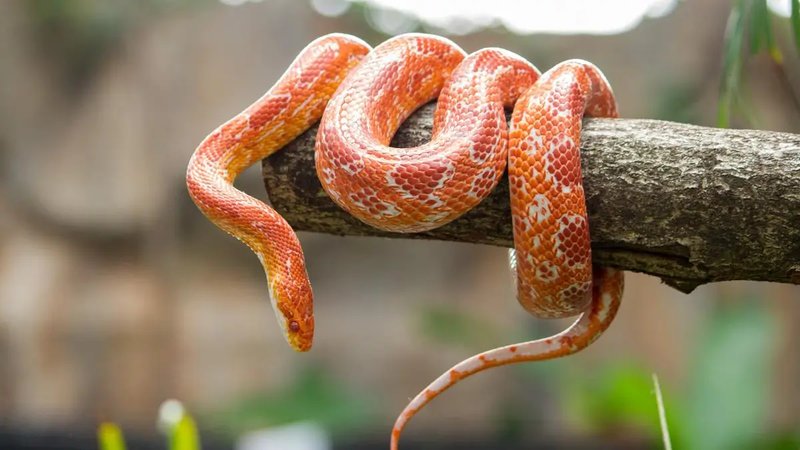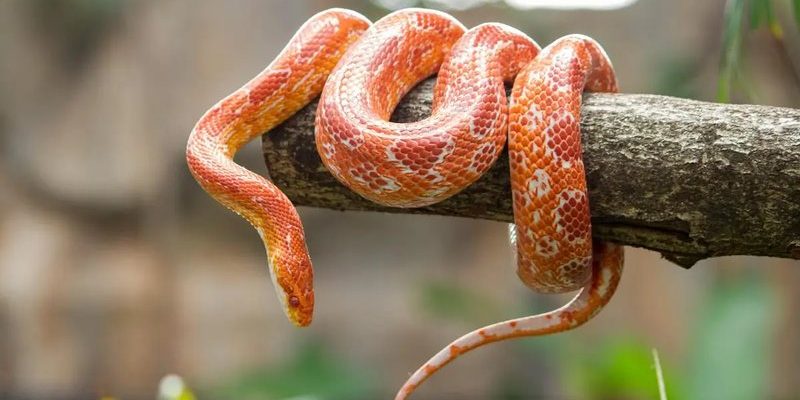
But before you jump into the world of snake ownership, it’s important to know what you’re getting into. Caring for corn snakes requires some specific knowledge and preparation. You’ll want to understand their habitat needs, feeding routines, and health considerations. So grab a cup of coffee, and let’s delve into everything you need to know to keep your future corn snake happy and healthy.
Setting Up the Perfect Habitat
Creating a comfortable and safe living environment is crucial for your corn snake. Think of their habitat as a cozy little apartment. Ideally, a corn snake needs a tank that’s at least 20 gallons, especially as they grow. This size allows for movement and exploration, which is important for their health.
When setting up the tank, make sure to include the essentials:
- Substrate: Choose a suitable bedding material like aspen shavings or coconut fiber. These options are not only safe but also help with humidity control.
- Hiding Spots: Corn snakes like to feel secure. Providing at least two hiding spots—one warm and one cool—helps them feel safe and less stressed.
- Water Dish: A shallow water bowl should always be available for drinking and soaking. Just like we enjoy a refreshing drink on a hot day, snakes appreciate clean water for hydration.
- Heating Elements: Since corn snakes are ectothermic, they rely on external heat sources. A heat lamp or under-tank heater will help create a temperature gradient in the tank.
Make sure to monitor the temperature regularly. The warm side of the tank should be around 85-90°F, while the cooler end should stay between 70-75°F. This temperature range is key for their digestion and overall well-being.
Feeding Your Corn Snake
Feeding a corn snake is generally straightforward, but it helps to know a few best practices. Typically, corn snakes eat frozen-thawed mice or rats, depending on their size. You might be wondering why frozen-thawed instead of live prey. Well, live animals can injure your snake, and frozen-thawed is a safer option. Plus, it’s a lot easier for you as the owner!
Here’s a simple feeding schedule based on their age:
- Hatchlings: Feed once every 5-7 days.
- Juveniles: Feed once every 7-10 days.
- Adults: Feed once every 10-14 days.
When you feed your snake, be sure to use feeding tongs to present the meal. This not only keeps your hands safe but also mimics their natural hunting behavior. It helps to watch them eat; it’s a fascinating sight!
Handling Your Corn Snake
Handling your corn snake can be one of the most enjoyable parts of being a snake owner. These snakes are generally quite docile and can become accustomed to regular handling. However, it’s essential to do it right, especially if you’re a beginner.
Start by letting your snake acclimate to its new environment for at least a week before attempting to handle it. After that, here are some tips to keep in mind:
- Be Gentle: Always support your snake’s body and avoid squeezing. Think of them as a delicate water hose; you want to hold them gently without restricting their movement.
- Choose the Right Time: Handle your snake when it’s active, usually in the early evening. Avoid handling right after feeding, as they might be more irritable.
- Stay Calm: Your corn snake can sense your energy, so try to stay calm and relaxed during handling. Even the most chill snakes can become defensive if they feel anxious vibes from you!
A little time spent handling your corn snake can help build trust and create a bond between you and your new pet.
Understanding Their Behavior
Each corn snake has its own personality. You might find some are more curious, while others prefer to stay hidden. Being observant and understanding common behaviors will help you provide the best care possible.
For instance, if your snake is constantly trying to escape or hides more than usual, it could be a sign of stress or an unsuitable habitat. Pay attention to their body language. If they puff themselves up or hiss, they’re likely feeling threatened.
On the flip side, if your corn snake is calm and actively exploring, it’s likely comfortable in its surroundings. Here’s the thing: if you notice significant changes in behavior, don’t hesitate to consult with a vet experienced with reptiles.
Maintaining Proper Humidity and Temperature
Humidity and temperature are vital components of your corn snake’s well-being. They thrive in a relatively dry environment, but they do require some humidity—around 30-50%. Too much humidity can lead to health issues, like respiratory infections.
To maintain proper humidity, you can lightly mist their habitat every few days or include a moist hide, which is a hiding spot filled with damp substrate. This area allows for occasional humidity when they need it.
Here’s how you can monitor humidity and temperature effectively:
- Use Thermometers: Place a thermometer at both the warm and cool ends of the tank to constantly check the temperature.
- Hydrometers for Humidity: A simple humidity gauge will help you keep an eye on moisture levels.
- Avoid Cold Spots: Ensure there are no drafts or cold areas in the room where the tank is located.
Regularly checking these elements ensures your snake stays in top shape.
Regular Health Checks
Caring for your corn snake involves staying vigilant about their health. Just like with any pet, it’s crucial to look for signs of potential issues. Here are some common health problems to watch for:
- Respiratory Infections: Look for wheezing or bubbling around the mouth.
- Mites: Check for tiny black or red dots on their skin; these are signs of parasites.
- Shedding Issues: If your snake doesn’t shed properly, it could cause stress or health problems.
Regularly handling your snake can help you easily spot any abnormalities. And remember, just like visiting a doctor for check-ups, visiting a reptile vet yearly is a good idea, especially for first-time keepers.
Final Thoughts
Owning a corn snake can be a rewarding experience, especially if you’re prepared to provide the care they need. With a proper habitat, a balanced diet, and regular health checks, your corn snake can thrive and be a wonderful companion. Just remember to be patient and observant, and you’ll unlock the unique personality of your snake, making the journey all the more enjoyable.
So, are you ready to start your journey into the fascinating world of corn snake care? With the right knowledge and enthusiasm, you’ll find that these reptiles make for fantastic pets. Happy snake keeping!

